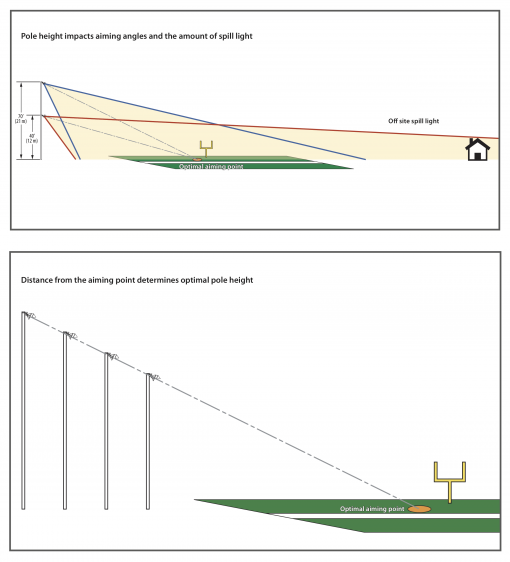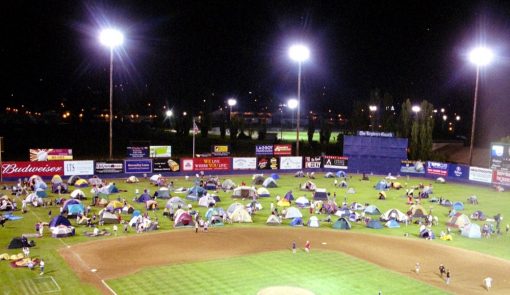The Lights at Civic Park
April 15, 2019
Big things are happening at Civic Park! Site work and grading are complete, the pedestrian bridge over Amazon Parkway has been removed, and the first concrete has been poured. Construction of the fieldhouse began in March and new progress is visible every day.
As Civic Park begins to take shape, we want to share some details about the facility that may not be easily seen from the architectural renderings or current construction work. First up, the field lighting.
While this may seem like an unusual feature to highlight, the lights on the outdoor turf field will play a significant role in Civic Park’s operations. This feature has been the subject of careful planning and discussion throughout the design process for the facility.
The Civic Park field will be illuminated by four light standards; one in each corner of the field. These lights have been designed with energy efficiency and neighborhood impact in mind. Early in the construction process, the ECA board of directors voted to optimize the field lights by using LED lights. This will decrease the amount of electricity required to operate the lights and result in a cost savings for the facility in the long run.

Modern LED lights direct light solely onto the playing field.
Each light standard will contain multiple LED lights. In the past, high-intensity discharge (HID) lights have been used to light athletic fields. LED’s use far less electricity than HID lights. They also have greater ability to control light output (photometrics) than traditional HID lights.
These differences are the result of structural variations between the two lighting styles. HID fixtures use one bulb and the light is directed using a parabolic reflector, essentially a curved mirror that directs light in the intended direction. LED fixtures have hundreds of individual diodes, each with its own individual lens that directs the light to specific areas. Thus, LED light projection offers more control and containment capability than HID.
In addition to the type of bulbs, the height of the light posts also plays key role in controlling and containing the field lighting. The light poles at Civic will be 90′ tall. Taller poles direct the light output downward onto the field, instead of horizontally, decreasing the amount of spill and glare into neighboring properties.

This illustration from Musco Lighting shows how higher light poles help decrease spill light.
The lights at Civic Park will enable the facility to host games, tournaments, and events in the evening. For many fans, watching the Eugene Emeralds play under the lights on a summer evening was one of their fondest memories of Civic Stadium. While many of us take the ability to watch a game in the evening for granted, Eugene’s citizens did not always have that luxury. When Civic Stadium was built in 1938, the field was not illuminated. Eugene High School student came together and organized a fundraiser to install light posts around the field so that games could be played in the evening. This upgrade allowed more people to attend games and events at Civic as activities could now take place in the evening, after they were off work. The first night game held at Civic Stadium featured semi-pro baseball teams from the Cascade League. The game was held on May 1st, 1940 at 8:15 PM.
Athletes and fans alike know there’s something special about games played “under the lights.” The darkened surroundings and brightly-lit field focus all attention on the game. All eyes focus on the players’ actions, making each play of utmost importance. These moments are why we take such care in planning for the field lights. We can’t wait to continue this tradition at Civic Park.

Lights illuminate a community sleepover at Civic Stadium in 2002.